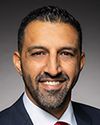The biggest downside is detours. In reality, in order to have access to the other side, people have to travel a detour of about 30 kilometres.
It is also important to understand that this has an impact on economic development. People often live on our side of the river and work at ArcelorMittal or Rio Tinto. The absence of ice bridges makes the entire south shore of the Richelieu River less attractive to people on the other side of the river.
In 2008, the ice bridge functioned incredibly well because the river was frozen. 10 years later, we have started to see the real impact of climate change. The river almost doesn't freeze anymore, so it has become dangerous. Ice bridges are no longer an option in terms of transportation.
There are also all the related services. It should be noted that we are largely a rural area, so people are often isolated. For example, there is a grocery store on one shore but not on the other, and the same goes for the pharmacy. Obviously, each city and village specialized according to land occupancy. When there was an ice bridge, in addition to the ferries during the summer, we were something of a large community. Now, that community has been cut in half.
That is why it is important to connect the two shores through another road link.




